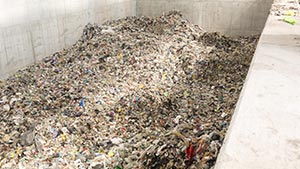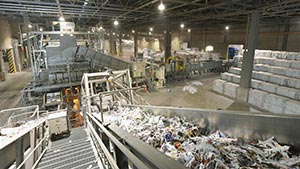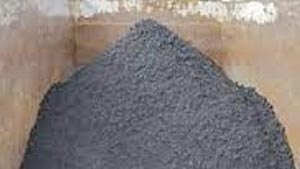
RDF
RDF – Refuse Derived Fuel – is a type of fuel produced from non-recyclable domestic and industrial waste. This fuel contains different types of plastics, textile, rubber, wood and paper. Recyclables, such as glass and metal, are taken by waste sorters. What is left either further processed to a higher quality alternative fuel, SRF, or used in waste-to-energy facilities. Through combustion waste incinerators use RDF to generate heat and electricity – a process known as energy recovery that prevents waste from ending up in landfills.
However, waste incinerators are not the exclusive users of RDF – RDF is also used by fuel producers. They use RDF with a high calorific value, also pre-SRF. This kind of material is suitable for additional processing (usually mechanical processes) that turns it into SRF and makes it suitable as an alternative to fossil fuels such as bituminous coal.

SRF
SRF – Solid Recovered Fuel – is nothing but RDF upgraded to a fuel that consists of smaller fractions with a higher energy content. By processing RDF the waste material is further upgraded: firstly, because more recyclables are taken out, and secondly, because the non-recyclable residue is used as fuel capable of replacing primary fossil fuels. Depending on the quality and application, SRF can substitute up to 70% of the primary fuels used in kilns or boilers.

Paper rejects
Paper rejects is the coarse residue deriving from the pulping process. Besides the fibres, the material it-self contains a significant amount of (non-recyclable) plastics. Due to this fact, this material is highly suitable as an alternative fuel in waste-to-energy boilers, but it can also be further processed and upgraded to Solid Recovered Fuel (SRF).
Paper sludge
Depending on the type of paper that is being produced, fibres in paper and cardboard can be recycled up to five times. During the pulping process, fibres are discarded and end up in paper sludge. This type of paper sludge is a valuable resource for many industries, both as alternative fuel as well as alternative raw material. Lignite boilers co-combust paper sludge, taking benefit from both its’ heating value as well as calcium content.

Sewage sludges
Sewage sludge is a end product of urban waste-water treatment plants and facilities, that needs additional processing.
After undergoing the dehydration and filtration treatment, the sludge is dried in a drum drier and becomes dry enough to be pelletized.
The use of this type of waste is very versatile: it is used as compost compound, as fertilizer in agriculture or, if it is dried, as an alternative fuel in incineration plants or for cement factories’ kilns.It can also be used as fuel in waste boilers for other industrial processes.

